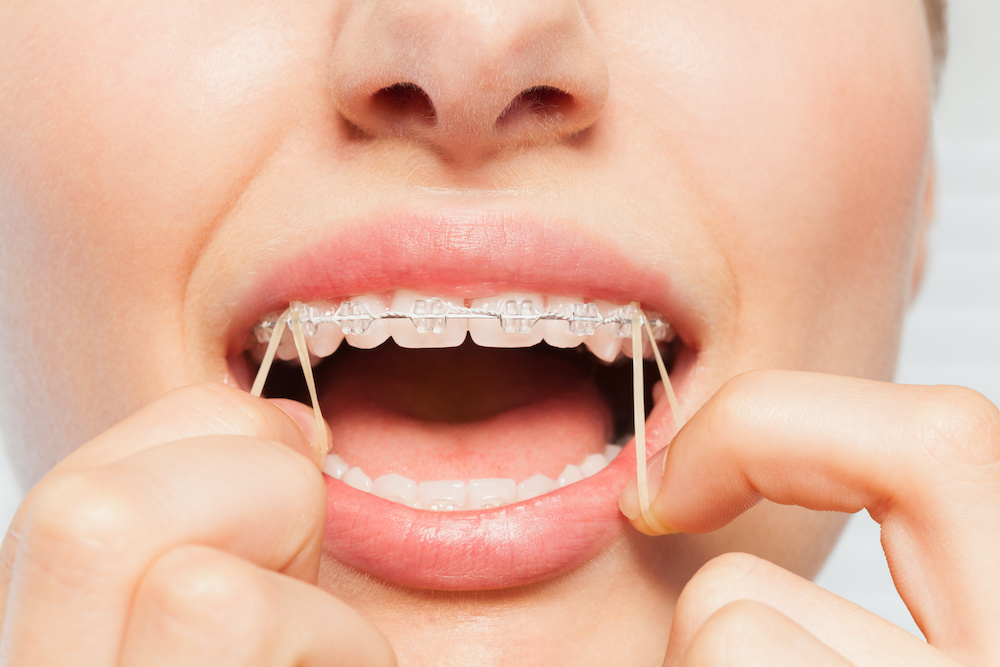Elastics
Helping Correct Your Bite

What Do Rubber Bands (Elastics) Do ?
Rubber bands are an important part of the orthodontic treatment; they provide the force necessary to move the teeth and jaws into the proper alignment allowing your teeth to fit together comfortably when you bite down. they can also be used to speed up the process of moving or straightening a tooth or teeth.
How and when should rubber bands (elastics) be worn?
Following the directions you are given will ensure your treatment continues on schedule, rubber bands must be worn 22 hours a day unless instructed otherwise. This includes wearing them day and night (even while sleeping), and only removing the rubber bands to eat, floss and brush.


What to expect ?
Temporary soreness of the jaws, mouth and teeth is normal for the first few days after adding elastics to your treatment routine. However, wearing them intermittently can cause constant discomfort and slow the treatment's rate of progress.
Types of Elastics
This allows your orthodontist to correct excess overjet, often called "overbite".
This helps move your upper teeth forward and bottom teeth back correcting an underbite.
This helps in open bite situation where your top front teeth don't touch the bottom front teeth.
This elastic helps line up the center of the upper and lower front teeth.
These elastics usually run from the inside of an upper tooth to the outside of a bottom tooth, and can also be used the other way round to help correct a crossbite.
This elastic can be attached to any configuration of teeth but are most commonly used on the back teeth. This helps to bring the teeth together and touching for a more comfortable and functional bite.
Clear Aligner Elastics
This allows your orthodontist to correct excess overjet, often called "overbite".
This helps move your upper teeth forward and bottom teeth back correcting an underbite.

